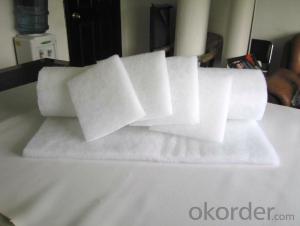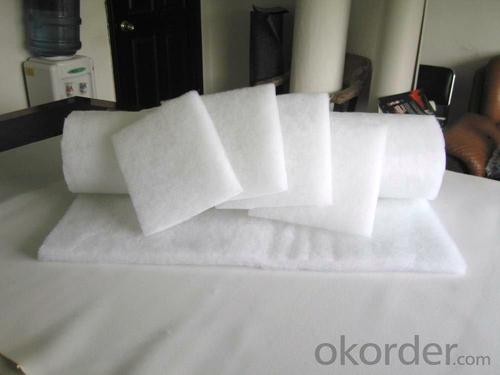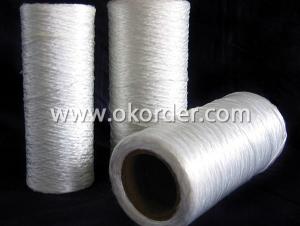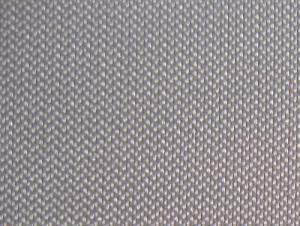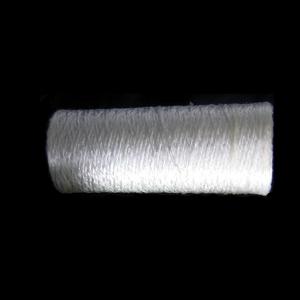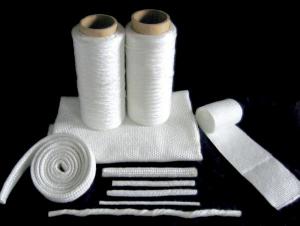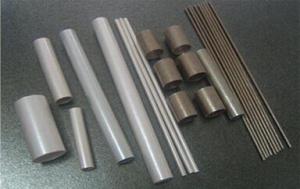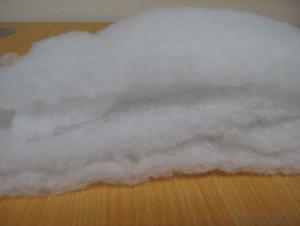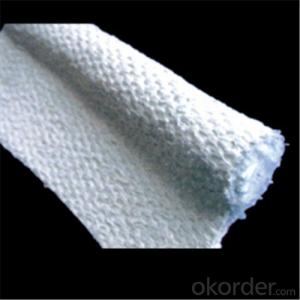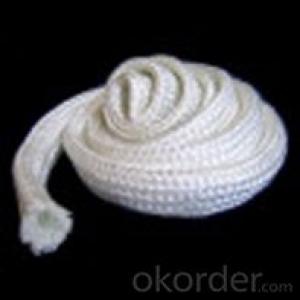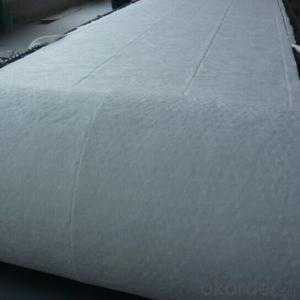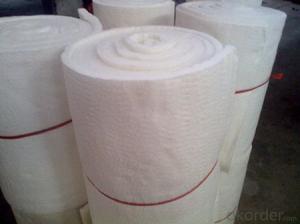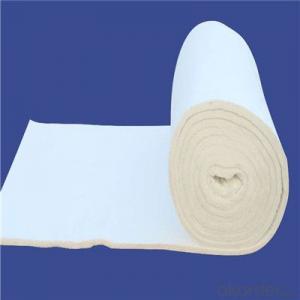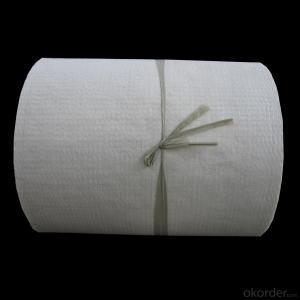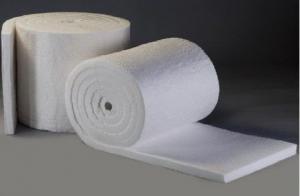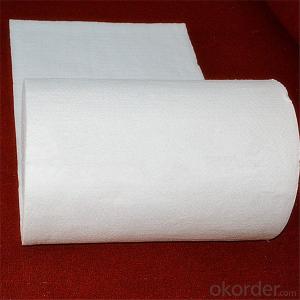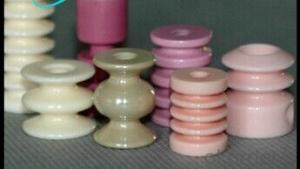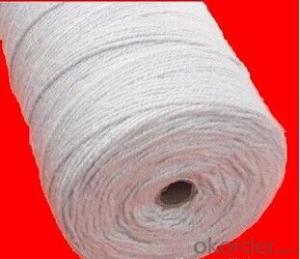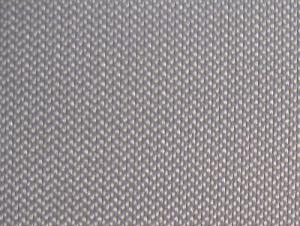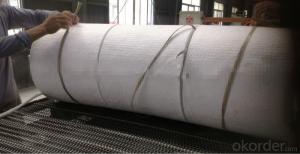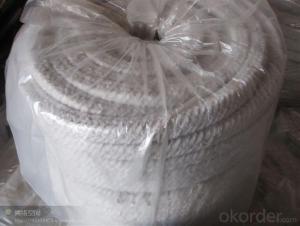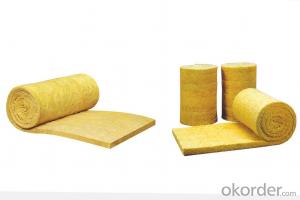Glass Fiber Textiles - Pure White Ceramic Fiber Blanket with Low Price
- Loading Port:
- Shanghai
- Payment Terms:
- TT OR LC
- Min Order Qty:
- 1 m.t.
- Supply Capability:
- 111 m.t./month
OKorder Service Pledge
OKorder Financial Service
You Might Also Like
Specifications
Low thermal conductivity
Excellent insulating effect
Good chemical stability
Stable high temperature performance
Easy to cut
Features:
1.Needled blanket
2.Non-combustible
3.Low density and low thermal conductivity
4.Excellent chemical stability
5.Resilience and resistance to thermal shock
6.Flexible and easy to cut or install
7.Good sound insulation and erosion resistance
8.Contain no organic binder
9.Asbestos free
10.Blanket density:96kg/m3,128kg/m3
11.Other thickness or density variations are subject to order
12.Available size:7200mm*610mm*10-50mm
13.Additional coating or coverings according to order
14.Package:520 cartons in a 40HC container,440 cartons in a 40GP container,220 cartons in a 20GP container
Application:
This high-quality fiber blanket has excellent processing or construction strength and anti-high temperature
performance which can meet demands for the application of heat insulation on various hot faces and cold
faces in different furnaces. It is a new type of refractory and insulating materials provided by our company
for customers. The product is white with formal dimension and integrates the performance of heat insulation
and thermal preservation together.
1. The insulating material for wall lining and back lining of industrial furnaces and heating devices
2. Insulating materials of high-temperature equipment
3. Material to produce module/folded module
Physical and chemical composition
Common | Standard | Pure | High Aluminium | Zirconium | ||
Classification temperature(°C) | 1100 | 1260 | 1260 | 1360 | 1430 | |
Work temperature(°C) | <1000 | 1050 | 1100 | 1200 | 1350 | |
Color | White | Pure white | Pure white | Pure white | Pure white | |
Density (kg/m3) | 96 | 96 | 96 | 128 | 128 | |
Permanent linear shrinkage(%)(after24 hours,density 128kg/m3) | -4 | -3 | -3 | -3 | -3 | |
Thermal conductivity (w/m.k) density 128kg/m3)
| 0.09(400°C) | 0.09(400°C) | 0.09(400°C) | 0.132(600°C) | 0.76(600°C) | |
Tensile strength (Mpa) density128kg/m3) | 0.08-0.12 | 0.08-0.12 | 0.08-0.12 | 0.08-0.12 | 0.08-0.12 | |
Chemical Composition (% | AL2O3 | 44 | 46 | 47--49 | 52-55 | 39-40 |
AL203+SIO2 | 96 | 97 | 99 | 99 | - | |
AL2O3+SIO2+Zro2 | - | - | - | - | 99 | |
Zro2 | - | - | - | - | 15-17 | |
Fe2O3 | <1.2 | <1.0 | 0.2 | 0.2 | 0.2 | |
Na2O+K2O | ≤0.5 | ≤0.5 | 0.2 | 0.2 | 0.2 | |
Size (mm) | Common 7200*610*10-50 others up to buyer | |||||
- Q: What are the advantages of using glass fiber textile in composites?
- There are several advantages of using glass fiber textile in composites: 1. High strength: Glass fibers are known for their exceptional strength-to-weight ratio. When used as a reinforcement in composites, they provide high tensile strength and stiffness, making them suitable for applications that require strength and durability. 2. Lightweight: Glass fiber textiles are lightweight, which helps in reducing the overall weight of the composite material. This is particularly advantageous in industries such as aerospace and automotive, where weight reduction is critical for fuel efficiency and performance. 3. Corrosion resistance: Glass fibers are highly resistant to corrosion and do not react with chemicals or moisture. This makes them suitable for applications in harsh environments, such as marine, chemical, or oil and gas industries, where corrosion resistance is essential. 4. Electrical insulation: Glass fibers have excellent electrical insulation properties, making them ideal for applications where electrical conductivity needs to be minimized. This is particularly important in industries like electronics and telecommunications. 5. Chemical resistance: Glass fibers are resistant to most chemicals, acids, and alkalis. This makes them suitable for applications where exposure to harsh chemicals or corrosive substances is expected. 6. Design flexibility: Glass fiber textiles can be easily molded into complex shapes, allowing for the creation of intricate designs and structures. This flexibility in design offers greater freedom to engineers and designers when developing composite components. 7. Cost-effective: Glass fiber textiles are relatively inexpensive compared to other reinforcement materials such as carbon fiber. This makes them a cost-effective choice for applications where high strength and durability are required, but budget constraints exist. Overall, the advantages of using glass fiber textiles in composites include their high strength, lightweight nature, corrosion resistance, electrical insulation properties, chemical resistance, design flexibility, and cost-effectiveness. These properties make glass fiber textiles a popular choice in various industries, ranging from construction and automotive to aerospace and electronics.
- Q: What's the use of glass fiber?
- Glass glass fiber rope twisted, can be called "the king of the rope." glass rope a finger as crude, actually be able to lift a truck full of goods! Because the glass rope not afraid of corrosion, no rust, so as a cable crane sling, very suitable synthetic fiber products do. Although the rope firmly, but it will melt at high temperatures, and the glass rope but not afraid, therefore, the lifeguard used glass rope special security.
- Q: Can glass fiber textiles be easily sewn or stitched?
- Glass fiber textiles cannot be easily sewn or stitched due to the brittle nature of the material. Sewing or stitching through glass fiber textiles can cause the fibers to break or weaken, compromising the integrity of the fabric. Specialized techniques and tools are required to work with glass fiber textiles, such as using adhesives, heat sealing, or ultrasonic bonding.
- Q: How do glass fiber textiles affect supply chain logistics?
- Glass fiber textiles can have a significant impact on supply chain logistics. Firstly, glass fiber textiles are lightweight and have a high strength-to-weight ratio, making them ideal for transportation and storage. This means that more products can be packed into a single shipment, reducing the number of shipments required and saving costs on transportation. Additionally, glass fiber textiles are non-perishable and resistant to moisture and chemicals, which increases their shelf life and reduces the risk of damage during transport. This reduces the need for frequent replacements and minimizes the chances of product loss or wastage. Moreover, glass fiber textiles can be easily customized and cut into specific shapes and sizes, allowing for efficient packaging and space utilization. This enables companies to optimize their warehouse space and minimize storage costs. Furthermore, glass fiber textiles have excellent insulating properties, which can be advantageous in certain supply chains. For example, in the cold chain logistics of perishable goods, glass fiber textiles can help maintain the desired temperature and protect the products from external environmental factors. Lastly, glass fiber textiles are recyclable and environmentally friendly. This aligns with the growing global focus on sustainability and reduces the negative impact on the environment. Incorporating glass fiber textiles in the supply chain can contribute to a more eco-friendly and responsible approach to logistics. In conclusion, glass fiber textiles have a positive impact on supply chain logistics by reducing transportation costs, minimizing product damage, optimizing storage space, enhancing insulation capabilities, and promoting sustainability.
- Q: How do glass fiber textiles contribute to noise reduction?
- Glass fiber textiles contribute to noise reduction by absorbing sound waves. The fibrous structure of the textiles traps and dissipates sound energy, preventing it from bouncing off surfaces and creating echoes or reverberations. This helps to create a quieter and more acoustically comfortable environment.
- Q: Can glass fiber textiles be used in the production of curtains and blinds?
- Yes, glass fiber textiles can be used in the production of curtains and blinds. Glass fiber textiles are lightweight, durable, and have excellent heat and sound insulation properties, making them a suitable choice for curtains and blinds. They can also be woven into various patterns and designs, offering a wide range of options for aesthetic purposes. Additionally, glass fiber textiles are resistant to fading, moisture, and mildew, making them a practical and long-lasting choice for window treatments.
- Q: How does moisture affect glass fiber textiles?
- Glass fiber textiles can be affected by moisture in both positive and negative ways. On the positive side, moisture can enhance the flexibility and pliability of the textiles, making them easier to handle and more comfortable to wear. Furthermore, it can improve the thermal insulation properties of glass fiber textiles, thus increasing their effectiveness in retaining heat. This is especially advantageous in cold or wet conditions. Nevertheless, the prolonged exposure to moisture can also prove harmful to glass fiber textiles. It can promote the growth of mold and mildew, which can compromise the integrity of the textiles and reduce their lifespan. Additionally, it can weaken the glass fibers, causing them to become less durable over time. Moreover, moisture can add weight to the textiles, leading to discomfort when worn and potentially reducing their breathability. To counteract the negative effects of moisture on glass fiber textiles, it is vital to properly care for and maintain them. This may involve regular cleaning and drying to prevent the growth of mold and mildew. Additionally, applying water-repellent coatings to the textiles can minimize moisture absorption and safeguard against damage. Overall, while moisture can provide certain benefits for glass fiber textiles, it is essential to strike a balance to ensure their longevity and performance.
- Q: Can glass fiber textile be used in protective clothing?
- Glass fiber textiles have the capability to be utilized in protective clothing, given their exceptional heat resistance and thermal insulation properties. They are renowned for their ability to endure high temperatures and safeguard against radiant heat, flames, and molten metal splashes. In various industries, such as firefighting and foundry work, glass fiber textiles are frequently employed in protective clothing for professionals operating in environments with elevated temperatures. Furthermore, these textiles possess chemical resistance, rendering them suitable for protective clothing in industries where exposure to chemicals is a concern. Nevertheless, it is crucial to acknowledge that glass fibers can cause skin irritation. Therefore, appropriate measures should be taken to ensure that the textile is adequately encapsulated or layered with other materials to prevent direct contact with the skin.
- Q: How do glass fiber textiles perform in terms of durability?
- Glass fiber textiles are known for their exceptional durability. The use of glass fibers in textile production results in fabrics that are extremely strong and resistant to wear and tear. These textiles can withstand high levels of stress and are less likely to stretch or shrink compared to other types of textiles. Additionally, glass fiber textiles have excellent resistance to chemicals, moisture, and UV radiation, making them highly suitable for outdoor applications and environments with harsh conditions. Furthermore, glass fiber textiles have a long lifespan and maintain their structural integrity over time, ensuring their durability in various applications such as in the automotive, aerospace, and construction industries.
- Q: Can glass fiber textiles be used in 3D printing?
- Yes, glass fiber textiles can be used in 3D printing. Glass fiber reinforced materials are commonly used in additive manufacturing processes to enhance the mechanical properties of the printed objects. The addition of glass fiber textiles to the printing material can increase the strength, stiffness, and heat resistance of the printed parts. This makes them suitable for applications that require high strength and durability, such as automotive parts, aerospace components, and industrial machinery. However, it is important to note that using glass fiber textiles in 3D printing may require special modifications to the printing process, such as using larger nozzles and adjusting the printing parameters to accommodate the fibers.
Send your message to us
Glass Fiber Textiles - Pure White Ceramic Fiber Blanket with Low Price
- Loading Port:
- Shanghai
- Payment Terms:
- TT OR LC
- Min Order Qty:
- 1 m.t.
- Supply Capability:
- 111 m.t./month
OKorder Service Pledge
OKorder Financial Service
Similar products
Hot products
Hot Searches
